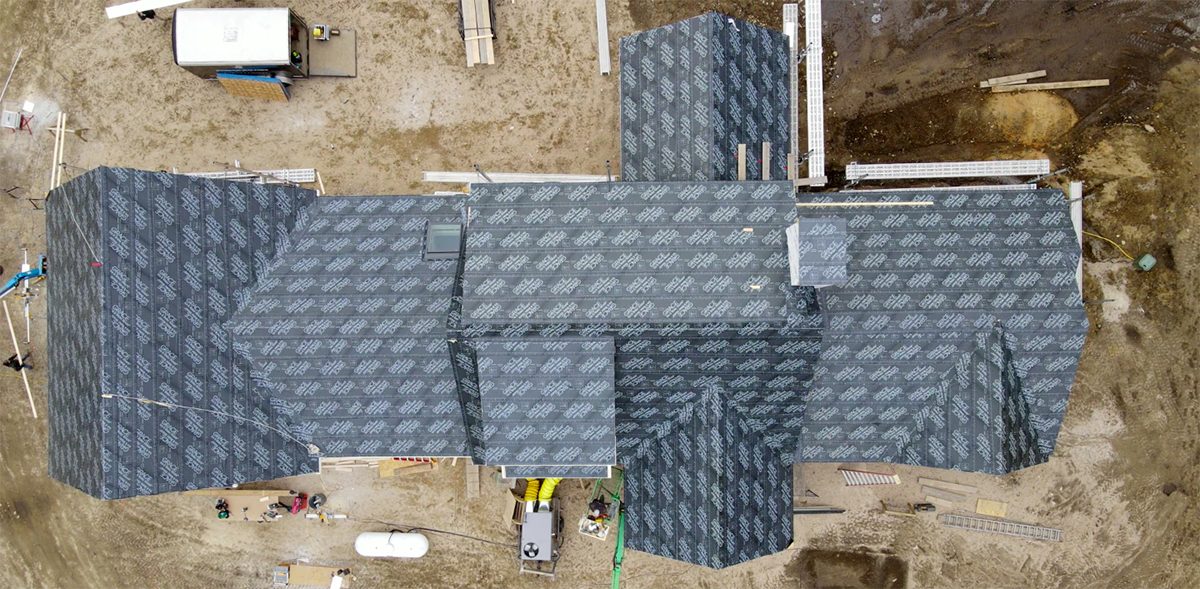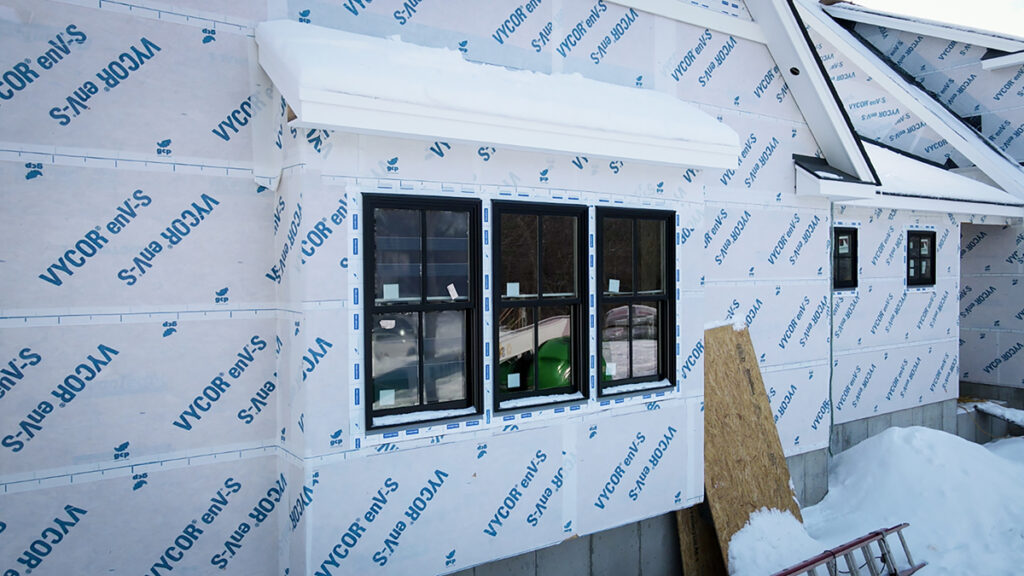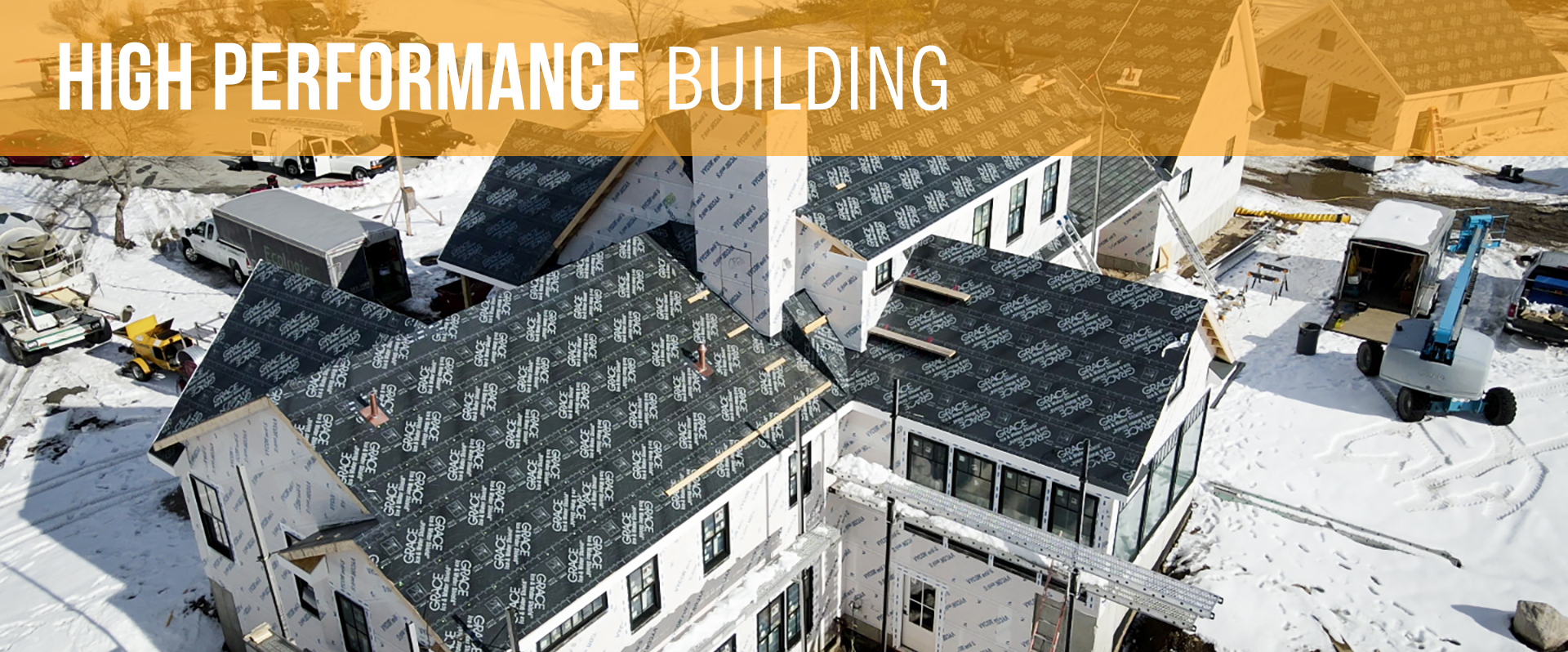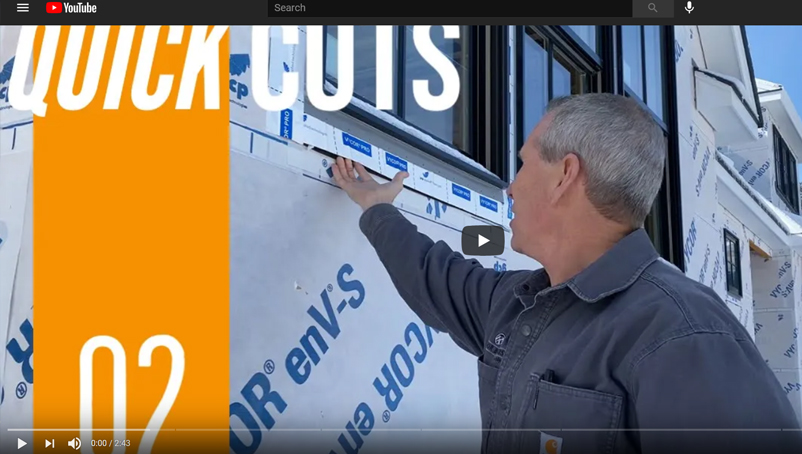HIGH PERFORMANCE BUILDING | Issue 2 – April 1, 2021
Building in coastal New England means building for drenching rain, hurricane-force winds, heavy snow and searing summer heat. Mother Nature isn’t always kind to us. Fortunately, construction technology is on our side. The new generation of weather barriers create a strong, durable defense that keeps your home dry and protected.
At Sweenor Builders, we’ve worked with all types of weather barrier products, and learned some valuable lessons. After all, our reputation is riding on how well your custom home remains sealed off from damaging leaks, mold and rot.
While many builders will take the convenient path and wrap the home in a typical construction house wrap, this has some real disadva ntages. A standard house wrap layer is stapled to the structural plywood sheathing, before the exterior shingles are nailed in. The problem arises as the nails and staples penetrate the house wrap. Imagine thousands of nail/staple holes, and each one being a potential entry point for water drips, moist air or condensation. OK, so how do you install home siding without making all these tiny holes in the structure?
ntages. A standard house wrap layer is stapled to the structural plywood sheathing, before the exterior shingles are nailed in. The problem arises as the nails and staples penetrate the house wrap. Imagine thousands of nail/staple holes, and each one being a potential entry point for water drips, moist air or condensation. OK, so how do you install home siding without making all these tiny holes in the structure?
An Impervious Envelope for Your Home
The smart option is to use a self-sealing, watertight barrier. These products are engineered to peel-and-stick over the plywood exterior, eliminating any need for stapling through the barrier. Each sheet slightly overlaps the adjacent sheet, eliminating any open seams— water is 100% blocked. Yes, but what about when the siding is nailed over the barrier? That’s where the science really shines. As a nail penetrates the barrier, the surface activates to form a self-sealing grip around it. Th at’s a level of weather defense you just can’t get from conventional plastic wrap.
at’s a level of weather defense you just can’t get from conventional plastic wrap.
Our team has had great success with the GCP Applied Technologies VYCOR weather-resistive barriers. These apply with no fasteners, requires no time-consuming seam taping, and adhere neatly without any special primer materials. This creates a permanent bond to the plywood structure, self-seals at overlaps and seals around siding fasteners. This membrane design also prevents air leakage.
Naturally, a tightly sealed home means less leakage of warm or cool air from the interior space. This translates to improve year-round comfort and energy savings for the homeowner. According to testing performed for the manufacturer, the VYCOR barrier sustains an air leakage rate that is 7 times lower than a leading conventional house wrap. You get a less drafty, more energy efficient home.
Smart Roofing for Brutal Weather
In coastal New England, our roofs endure constant assault— especially in winter when the snow and ice can pile up there for months at a time. Again, there is a better solution that goes way beyond conventional roofing paper or plastic barriers. We prefer Grace Ice & Water Shield, a self-adhered underlayment that delivers superior waterproofing performance and has been installed on more than two million homes. It works very much like the weather-resistant exterior barrier, but with even tougher properties to endure the added ice, water and heat concentrated on the roof. We’ve installed Grace’s standard Ice & Water barrier, as well as their high-temperature (HT) product. The HT is composed of two waterproofing materials—a rubberized asphalt adhesive combined with a high-performance polymeric film with UV barrier properties.
Take a look at how this added value for this RI oceanfront home. We typically achieve an air change rate of one per hour, and we were able to cut that in half for this home. These building envelope products combined with our building methodologies were contributing factors to getting an airtight seal. That will cut the costs to heat and cool the home considerably.
The peel-and-stick design of these barriers also offer some cost benefits, as they eliminate several laborious steps common to conventional house wraps and roof underlays. Our crew is often able to seal the entire home in just a couple of days since there are no time-consuming mechanical fasteners or extensive seam taping. While the products are more costly than basic weather barriers, the cost is partly defrayed by speeding up construction—and of course, a weather-tight home is always more comfortable and valuable in the long run.
I hope you’re enjoying our monthly blog. Please send comments, ask questions, and suggest ideas for future topics. We’re building every day. See it all come together by following us on social media and watching our SAWDUST and QUICK CUTS video series.
Jeff
Grow Your Knowledge
See our team in action…




